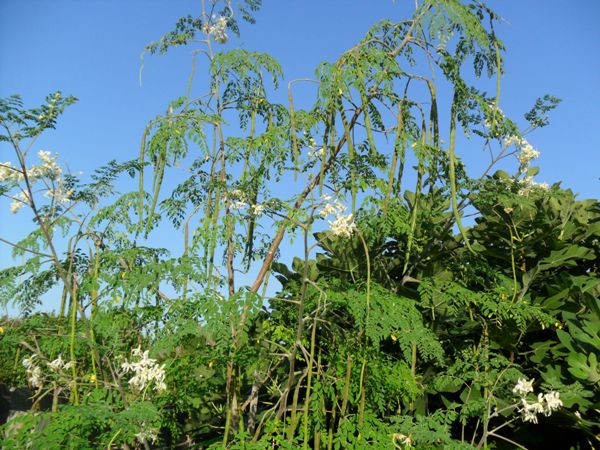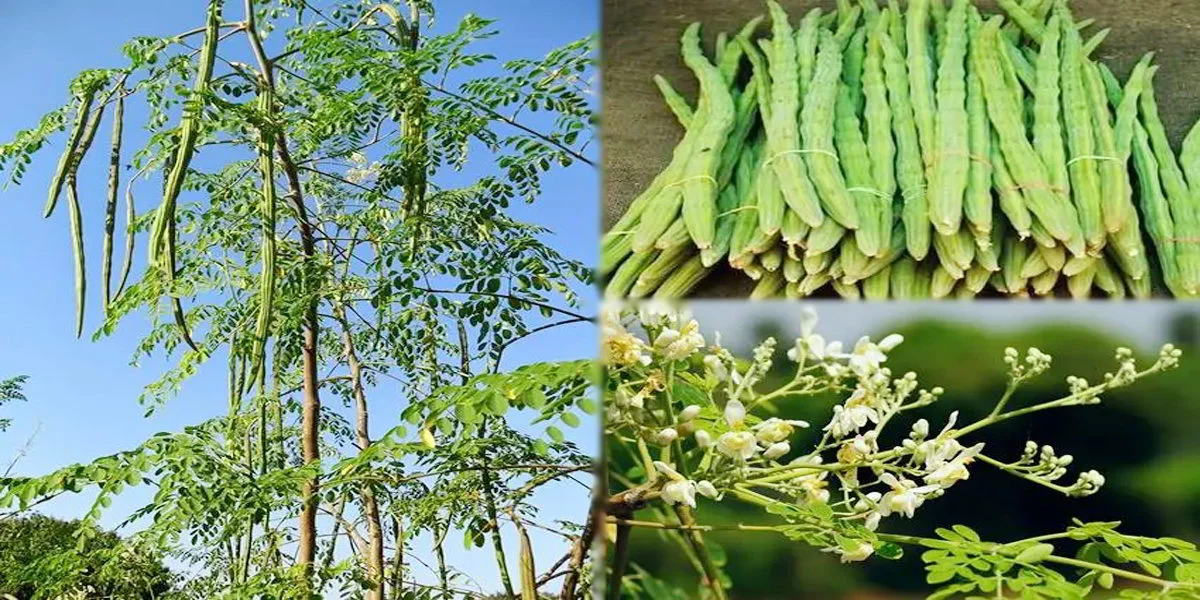Benefits of Organic Drumstick Cultivation: A Sustainable Approach
Drumstick cultivation has gained popularity in recent years due to its numerous health benefits and culinary uses. As more people become conscious of the impact of conventional farming practices on the environment and their own health, organic drumstick cultivation has emerged as a sustainable and eco-friendly alternative. By adopting organic techniques, farmers can not only produce healthier and more nutritious drumsticks but also contribute to the preservation of the environment.
One of the key benefits of organic drumstick cultivation is the absence of harmful chemicals and pesticides. Unlike conventional farming methods that rely heavily on synthetic fertilizers and pesticides, organic cultivation focuses on natural and sustainable practices. This means that drumsticks grown organically are free from harmful residues that can pose health risks to consumers. By eliminating the use of chemical inputs, organic drumstick cultivation ensures that the final product is safe and healthy for consumption.
Moreover, organic drumstick cultivation promotes soil health and fertility. Organic farmers prioritize the use of natural fertilizers such as compost, manure, and green manure, which enrich the soil with essential nutrients. These organic inputs not only provide the necessary nutrients for drumstick plants but also improve the overall soil structure and water-holding capacity. By maintaining soil health, organic farmers can ensure the long-term sustainability of their drumstick crops, reducing the need for external inputs and minimizing soil erosion.
In addition to benefiting human health and soil fertility, organic drumstick cultivation also contributes to the preservation of biodiversity. Organic farmers prioritize the use of natural pest control methods, such as crop rotation, intercropping, and biological control agents. These practices create a balanced ecosystem where beneficial insects and organisms thrive, keeping pest populations in check. By avoiding the use of chemical pesticides, organic farmers protect pollinators like bees and butterflies, which are crucial for the reproduction of drumstick plants and the maintenance of biodiversity in general.
Furthermore, organic drumstick cultivation helps conserve water resources. Conventional farming practices often involve excessive irrigation, leading to water wastage and depletion of groundwater reserves. In contrast, organic farmers employ water conservation techniques such as mulching and drip irrigation, which minimize water loss and ensure efficient water use. By adopting these practices, organic drumstick cultivation reduces the strain on water resources, making it a more sustainable approach in regions facing water scarcity.
Lastly, organic drumstick cultivation supports local economies and communities. Organic farming practices often require more labor-intensive methods, creating employment opportunities for local farmers and workers. By promoting organic drumstick cultivation, communities can become more self-reliant and less dependent on external inputs and markets. This not only strengthens local economies but also fosters a sense of community and connection to the land.
In conclusion, organic drumstick cultivation offers numerous benefits that make it a sustainable and eco-friendly approach. By eliminating harmful chemicals and pesticides, organic farmers produce healthier and safer drumsticks for consumers. Additionally, organic techniques promote soil health, biodiversity conservation, water resource conservation, and local economic development. As more people recognize the importance of sustainable agriculture, organic drumstick cultivation is becoming increasingly popular as a way to enjoy the nutritional and culinary benefits of drumsticks while minimizing the environmental impact.
Step-by-Step Guide to Successful Organic Drumstick Cultivation

Drumstick cultivation is a rewarding endeavor that allows you to grow your own fresh and organic drumsticks right in your backyard. By following a step-by-step guide to successful organic drumstick cultivation, you can master the techniques needed to ensure a bountiful harvest.
The first step in drumstick cultivation is selecting the right variety of drumstick seeds. There are several varieties available, but it is important to choose a variety that is well-suited to your climate and soil conditions. Look for seeds that are organic and non-GMO to ensure the highest quality and purity.
Once you have selected your drumstick seeds, it is time to prepare the soil. Drumsticks thrive in well-drained soil that is rich in organic matter. Start by clearing the area of any weeds or debris, and then loosen the soil with a garden fork or tiller. Add compost or well-rotted manure to the soil to improve its fertility and structure.
After preparing the soil, it is time to sow the drumstick seeds. Create furrows in the soil, about 1 inch deep and 2-3 feet apart. Place the seeds in the furrows, spacing them about 6 inches apart. Cover the seeds with soil and gently firm it down to ensure good seed-to-soil contact.
Water the newly sown seeds thoroughly, making sure the soil is evenly moist. Drumsticks require regular watering, especially during dry spells. However, be careful not to overwater, as this can lead to root rot. Monitor the soil moisture and adjust your watering schedule accordingly.
As the drumstick plants grow, they will need support to prevent them from falling over. Install stakes or trellises near the plants and gently tie the stems to the support structure using soft twine or plant ties. This will help the plants grow upright and prevent damage from wind or heavy rain.
Drumsticks are heavy feeders and require regular fertilization to ensure healthy growth and abundant harvest. Apply a balanced organic fertilizer every 4-6 weeks, following the manufacturer’s instructions for application rates. Additionally, you can top-dress the soil with compost or well-rotted manure to provide a slow-release source of nutrients.
Pests and diseases can pose a threat to drumstick plants, but by practicing organic cultivation techniques, you can minimize their impact. Monitor your plants regularly for signs of pests or diseases, such as aphids, caterpillars, or powdery mildew. If necessary, use organic pest control methods, such as neem oil or insecticidal soap, to manage the problem.
Harvesting drumsticks is an exciting moment in the cultivation process. The drumsticks are ready to be harvested when they reach a length of about 12-18 inches. Use a sharp knife or pruners to cut the drumsticks from the plant, making sure to leave a small portion of the stem attached. Harvesting regularly will encourage the plant to produce more drumsticks.
In conclusion, mastering organic techniques for drumstick cultivation is a rewarding experience that allows you to grow your own fresh and organic drumsticks. By following a step-by-step guide, you can successfully cultivate drumsticks in your backyard. Remember to select the right variety of seeds, prepare the soil properly, provide support for the plants, fertilize regularly, and manage pests and diseases organically. With patience and care, you will be rewarded with a bountiful harvest of delicious and nutritious drumsticks.
Common Challenges in Organic Drumstick Cultivation and How to Overcome Them
Drumstick cultivation is gaining popularity among organic farmers due to its numerous health benefits and high demand in the market. However, like any other crop, drumstick cultivation comes with its own set of challenges. In this article, we will discuss some common challenges faced by organic drumstick farmers and explore effective techniques to overcome them.
One of the major challenges in organic drumstick cultivation is pest and disease management. Drumstick plants are susceptible to various pests and diseases, such as aphids, whiteflies, and powdery mildew. These can significantly reduce the yield and quality of the crop if not managed properly. To overcome this challenge, farmers can adopt integrated pest management techniques.
Integrated pest management involves a combination of cultural, biological, and chemical control methods. Farmers can start by selecting disease-resistant drumstick varieties and practicing crop rotation to reduce the buildup of pests and diseases in the soil. Additionally, introducing beneficial insects, such as ladybugs and lacewings, can help control pest populations naturally. If necessary, organic-approved pesticides can be used as a last resort, ensuring that they are applied according to the recommended dosage and timing.
Another challenge in organic drumstick cultivation is weed control. Weeds compete with drumstick plants for nutrients, water, and sunlight, leading to stunted growth and reduced yield. Manual weeding can be time-consuming and labor-intensive, especially in large-scale cultivation. To overcome this challenge, farmers can adopt mulching and cover cropping techniques.
Mulching involves covering the soil around drumstick plants with organic materials, such as straw or dried leaves. This helps suppress weed growth by blocking sunlight and conserving soil moisture. Cover cropping, on the other hand, involves growing fast-growing plants, such as legumes or grasses, alongside drumstick plants. These cover crops act as living mulch, smothering weeds and improving soil fertility through nitrogen fixation.
Water management is another crucial challenge in organic drumstick cultivation, especially in areas with limited water resources. Drumstick plants require regular watering, especially during the flowering and fruiting stages. However, overwatering can lead to root rot and other water-related diseases. To overcome this challenge, farmers can adopt efficient irrigation techniques and water conservation practices.
Drip irrigation is a highly efficient method of watering drumstick plants. It delivers water directly to the root zone, minimizing water loss through evaporation and runoff. Additionally, farmers can collect and store rainwater during the rainy season for later use. This not only reduces water consumption but also helps maintain a consistent water supply during dry periods.
Lastly, market access and price fluctuations pose a significant challenge for organic drumstick farmers. While organic drumsticks are in high demand due to their nutritional value and health benefits, accessing the right market and getting a fair price can be challenging. To overcome this challenge, farmers can explore direct marketing options, such as selling directly to local consumers, restaurants, or organic food stores.
Additionally, farmers can consider forming cooperatives or joining farmer producer organizations to collectively negotiate better prices and access larger markets. Participating in organic certification programs can also help build trust and credibility among consumers, leading to better market opportunities.
In conclusion, organic drumstick cultivation comes with its own set of challenges, including pest and disease management, weed control, water management, and market access. However, by adopting integrated pest management techniques, mulching and cover cropping for weed control, efficient irrigation methods for water management, and exploring direct marketing options, organic drumstick farmers can overcome these challenges and master the art of organic drumstick cultivation.

